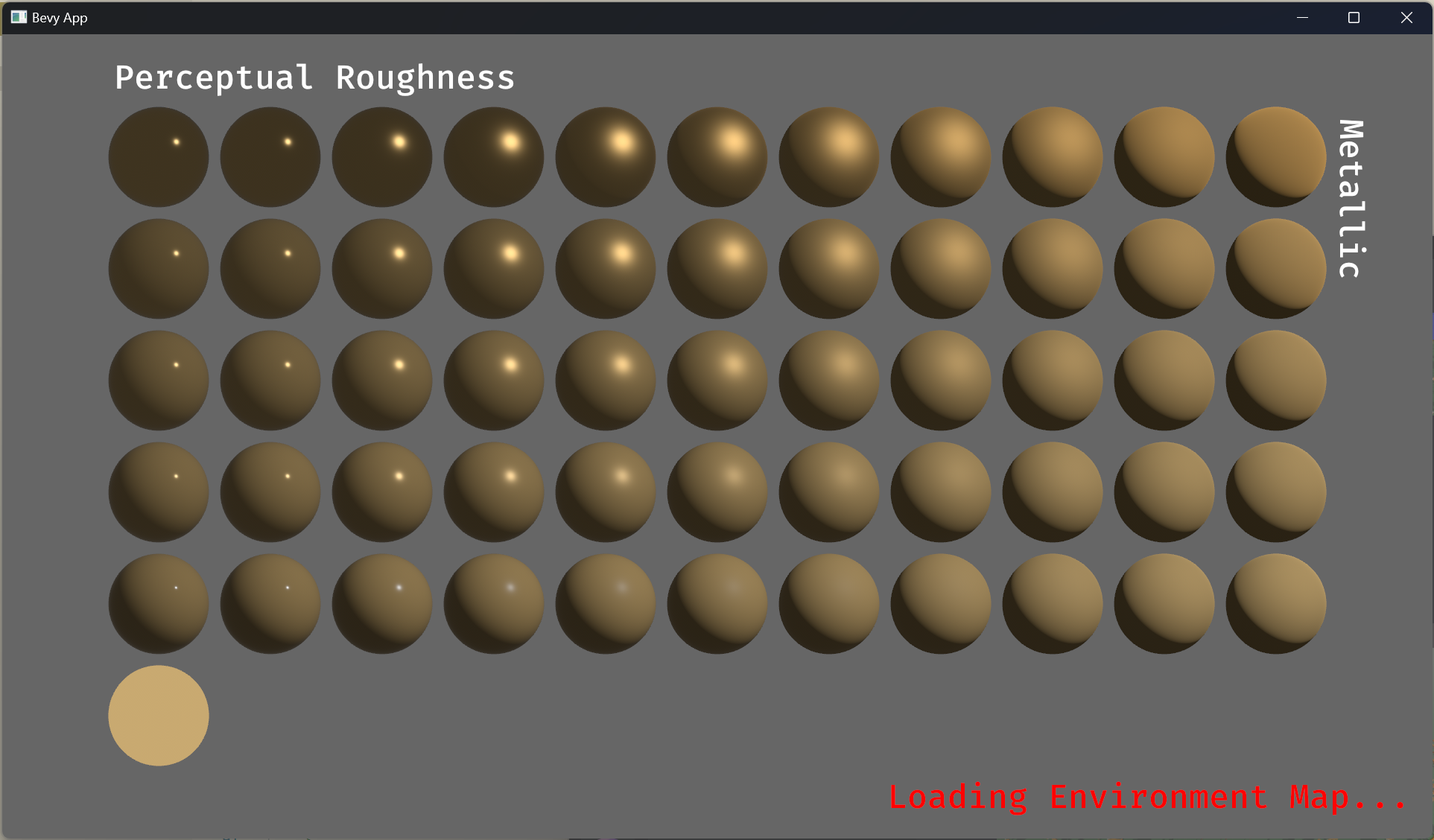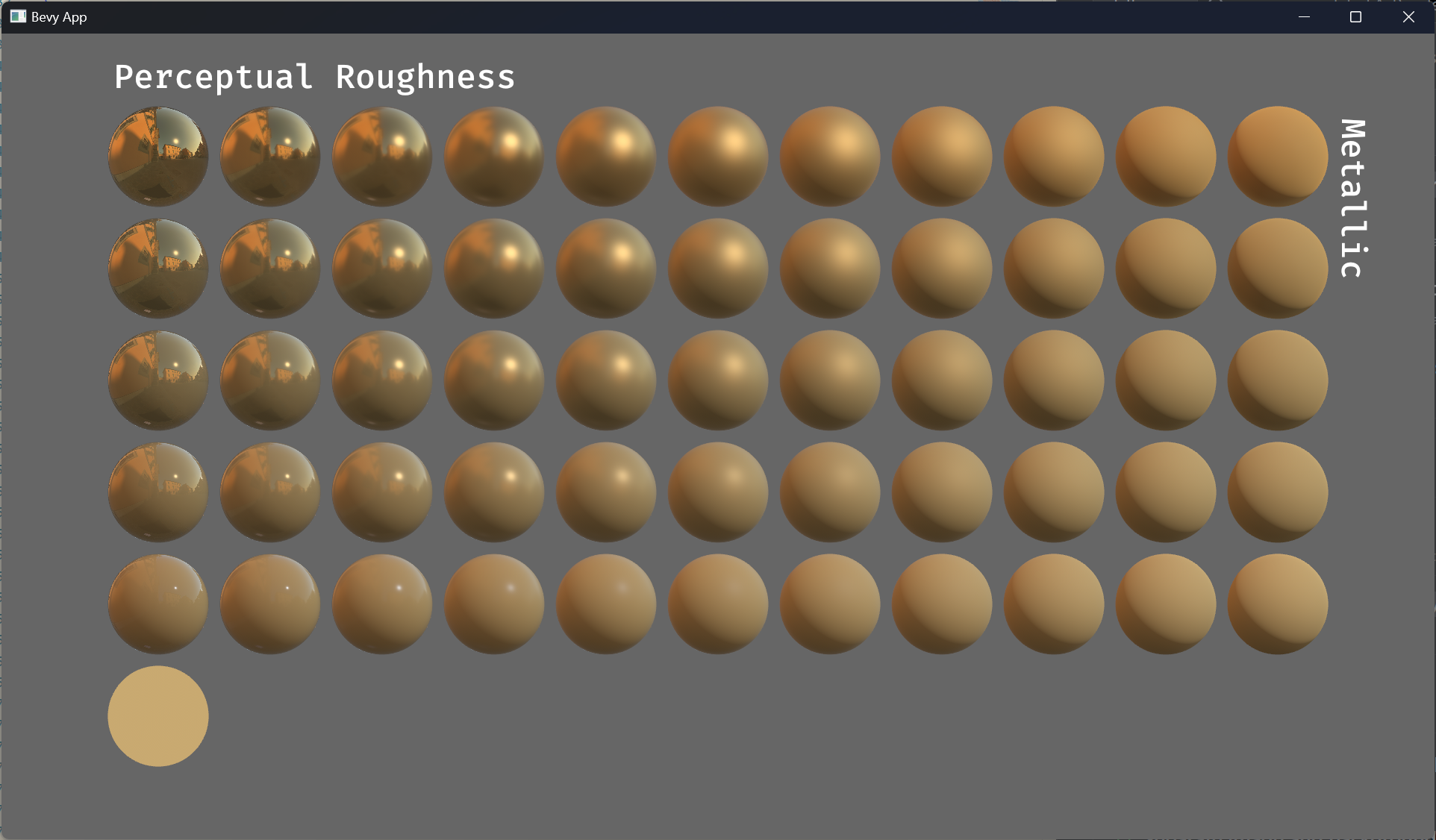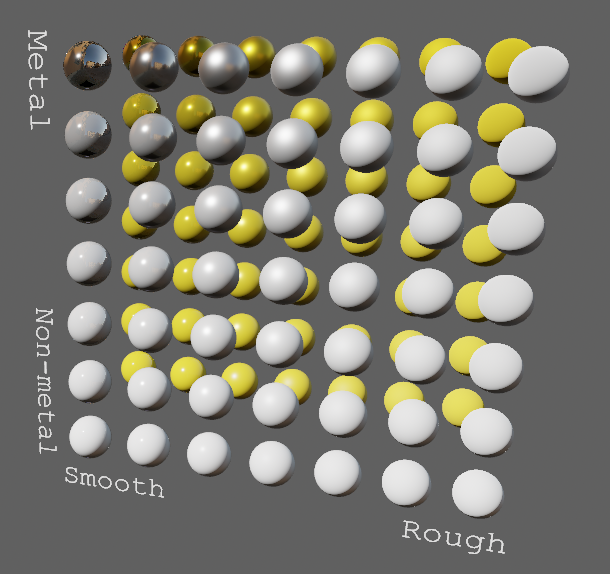# Objective
- Support WebGPU
- alternative to #5027 that doesn't need any async / await
- fixes#8315
- Surprise fix#7318
## Solution
### For async renderer initialisation
- Update the plugin lifecycle:
- app builds the plugin
- calls `plugin.build`
- registers the plugin
- app starts the event loop
- event loop waits for `ready` of all registered plugins in the same
order
- returns `true` by default
- then call all `finish` then all `cleanup` in the same order as
registered
- then execute the schedule
In the case of the renderer, to avoid anything async:
- building the renderer plugin creates a detached task that will send
back the initialised renderer through a mutex in a resource
- `ready` will wait for the renderer to be present in the resource
- `finish` will take that renderer and place it in the expected
resources by other plugins
- other plugins (that expect the renderer to be available) `finish` are
called and they are able to set up their pipelines
- `cleanup` is called, only custom one is still for pipeline rendering
### For WebGPU support
- update the `build-wasm-example` script to support passing `--api
webgpu` that will build the example with WebGPU support
- feature for webgl2 was always enabled when building for wasm. it's now
in the default feature list and enabled on all platforms, so check for
this feature must also check that the target_arch is `wasm32`
---
## Migration Guide
- `Plugin::setup` has been renamed `Plugin::cleanup`
- `Plugin::finish` has been added, and plugins adding pipelines should
do it in this function instead of `Plugin::build`
```rust
// Before
impl Plugin for MyPlugin {
fn build(&self, app: &mut App) {
app.insert_resource::<MyResource>
.add_systems(Update, my_system);
let render_app = match app.get_sub_app_mut(RenderApp) {
Ok(render_app) => render_app,
Err(_) => return,
};
render_app
.init_resource::<RenderResourceNeedingDevice>()
.init_resource::<OtherRenderResource>();
}
}
// After
impl Plugin for MyPlugin {
fn build(&self, app: &mut App) {
app.insert_resource::<MyResource>
.add_systems(Update, my_system);
let render_app = match app.get_sub_app_mut(RenderApp) {
Ok(render_app) => render_app,
Err(_) => return,
};
render_app
.init_resource::<OtherRenderResource>();
}
fn finish(&self, app: &mut App) {
let render_app = match app.get_sub_app_mut(RenderApp) {
Ok(render_app) => render_app,
Err(_) => return,
};
render_app
.init_resource::<RenderResourceNeedingDevice>();
}
}
```
# Objective
- I want to take screenshots of examples in CI to help with validation
of changes
## Solution
- Can override how much time is updated per frame
- Can specify on which frame to take a screenshots
- Save screenshots in CI
I reused the `TimeUpdateStrategy::ManualDuration` to be able to set the
time update strategy to a fixed duration every frame. Its previous
meaning didn't make much sense to me. This change makes it possible to
have screenshots that are exactly the same across runs.
If this gets merged, I'll add visual comparison of screenshots between
runs to ensure nothing gets broken
## Migration Guide
* `TimeUpdateStrategy::ManualDuration` meaning has changed. Instead of
setting time to `Instant::now()` plus the given duration, it sets time
to last update plus the given duration.
# Objective
- Test mobile example on real devices
## Solution
- Use [BrowserStack](https://www.browserstack.com) to have access to
[real
devices](https://www.browserstack.com/list-of-browsers-and-platforms/app_automate)
- [App Automate](https://www.browserstack.com/app-automate) to run the
example
- [App Percy](https://www.browserstack.com/app-percy) to compare the
screenshot
- Added a daily/manual CI job that will build for iOS and Android, send
the apps to BrowserStack, run the app on one iOS device and one Android
device, capture a screenshot, send it for visual validation, and archive
it in the GitHub action
Example run: https://github.com/mockersf/bevy/actions/runs/4521883534
They currently have a bug with the settings to view snapshots, they
should be public. I'll raise it to them, and if they don't fix it in
time it's possible to work around for everyone to view the results
through their API.
@cart to get this to work, you'll need
- to set up an account on BrowserStack
- add the secrets `BROWSERSTACK_USERNAME` and `BROWSERSTACK_ACCESS_KEY`
to the Bevy repo
- create a project in Percy
- add the secret `PERCY_TOKEN` to the Bevy repo and modify the project
name line 122 in the `Daily.yml` file
# Objective
- Fixes#1800, fixes#6984
- Alternative to #7196
- Ensure feature list is always up to date and that all are documented
- Help discovery of features
## Solution
- Use a template to update the cargo feature list
- Use the comment just above the feature declaration as the description
- Add the checks to CI
- Add the features to the base crate doc
# Objective
- Environment maps use these formats, and in the future rendering LUTs will need textures loaded by default in the engine
## Solution
- Make ktx2 and zstd part of the default feature
- Let examples assume these features are enabled
---
## Changelog
- `ktx2` and `zstd` are now party of bevy's default enabled features
## Migration Guide
- If you used the `ktx2` or `zstd` features, you no longer need to explicitly enable them, as they are now part of bevy's default enabled features
(Before)

(After)


# Objective
- Improve lighting; especially reflections.
- Closes https://github.com/bevyengine/bevy/issues/4581.
## Solution
- Implement environment maps, providing better ambient light.
- Add microfacet multibounce approximation for specular highlights from Filament.
- Occlusion is no longer incorrectly applied to direct lighting. It now only applies to diffuse indirect light. Unsure if it's also supposed to apply to specular indirect light - the glTF specification just says "indirect light". In the case of ambient occlusion, for instance, that's usually only calculated as diffuse though. For now, I'm choosing to apply this just to indirect diffuse light, and not specular.
- Modified the PBR example to use an environment map, and have labels.
- Added `FallbackImageCubemap`.
## Implementation
- IBL technique references can be found in environment_map.wgsl.
- It's more accurate to use a LUT for the scale/bias. Filament has a good reference on generating this LUT. For now, I just used an analytic approximation.
- For now, environment maps must first be prefiltered outside of bevy using a 3rd party tool. See the `EnvironmentMap` documentation.
- Eventually, we should have our own prefiltering code, so that we can have dynamically changing environment maps, as well as let users drop in an HDR image and use asset preprocessing to create the needed textures using only bevy.
---
## Changelog
- Added an `EnvironmentMapLight` camera component that adds additional ambient light to a scene.
- StandardMaterials will now appear brighter and more saturated at high roughness, due to internal material changes. This is more physically correct.
- Fixed StandardMaterial occlusion being incorrectly applied to direct lighting.
- Added `FallbackImageCubemap`.
Co-authored-by: IceSentry <c.giguere42@gmail.com>
Co-authored-by: James Liu <contact@jamessliu.com>
Co-authored-by: Rob Parrett <robparrett@gmail.com>
# Objective
- In case of a CI failure before the MSRV check, like installing linux dependencies, a comment was still added to the PR
## Solution
- Check that the actual MSRV step failed
# Objective
- Merge the examples on iOS and Android
- Make sure they both work from the same code
## Solution
- don't create window when not in an active state (from #6830)
- exit on suspend on Android (from #6830)
- automatically enable dependency feature of bevy_audio on android so that it works out of the box
- don't inverse y position of touch events
- reuse the same example for both Android and iOS
Fixes#4616Fixes#4103Fixes#3648Fixes#3458Fixes#3249Fixes#86
# Objective
- Avoid hitting the 6 hours default timeout
- Waiting for 6 hours for a job to fail is wasteful and slow down CI for other PRs
## Solution
- Put shorter timeouts on all jobs
# Objective
- Make CI friendlier
## Solution
- CI now says hello to new contributor
- for some jobs with non obvious solutions to failures, give more context
- example run should say which example failed
- example doc should say the next action to do (add metadata or run the update script)
- MSRV will say when it needs updating
I'm not completely sure everything is working and will try to trigger failures in this PR
# Objective
- Fixes#6777, fixes#2998, replaces #5518
- Help avoid confusing error message when using an older version of Rust
## Solution
- Add the `rust-version` field to `Cargo.toml`
- Add a CI job checking the MSRV
- Add the job to bors
# Objective
There isn't really a way to test that code using bevy_reflect compiles or doesn't compile for certain scenarios. This would be especially useful for macro-centric PRs like #6511 and #6042.
## Solution
Using `bevy_ecs_compile_fail_tests` as reference, added the `bevy_reflect_compile_fail_tests` crate.
Currently, this crate contains a very simple test case. This is so that we can get the basic foundation of this crate agreed upon and merged so that more tests can be added by other PRs.
### Open Questions
- [x] Should this be added to CI? (Answer: Yes)
---
## Changelog
- Added the `bevy_reflect_compile_fail_tests` crate for testing compilation errors
# Objective
- run examples is failing with `xvfb-run: error: Xvfb failed to start`
## Solution
- rollback ubuntu version for run-examples to 20.04. latest is 22.04
## Notes
- this is just a quick fix and someone should probably get it working on 22.04. I'll make an issue for that if this gets merged.
# Objective
- Fix CI issue with updated `cargo-app`
## Solution
- Move the Android example to its own package. It's not necessary for the CI fix, but it's cleaner, mimic the iOS example, and easier to reuse for someone wanting to setup android support in their project
- Build the package in CI instead of the example
The Android example is still working on my android device with this change 👍
# Objective
- Fix disabling features in bevy_ecs (broken by #5630)
- Add tests in CI for bevy_ecs, bevy_reflect and bevy as those crates could be use standalone
# Objective
I was about to submit a PR to add these two examples to `bevy-website` and re-discovered the inconsistency.
Although it's not a major issue on the website where only the filenames are shown, this would help to visually distinguish the two examples in the list because the names are very prominent.
This also helps out when fuzzy-searching the codebase for these files.
## Solution
Rename `shapes` to `2d_shapes`. Now the filename matches the example name, and the naming structure matches the 3d example.
## Notes
@Nilirad proposed this in https://github.com/bevyengine/bevy/pull/4613#discussion_r862455631 but it had slipped away from my brain at that time.
# Objective
Fixes#5668.
The Rust version used in the CI `build` step previously depended on the default Rust version defined by GitHub in the Ubuntu image: <https://github.com/actions/runner-images/blob/main/images/linux/Ubuntu2004-Readme.md#rust-tools>
This currently doesn't allow us to use Rust 1.63 features until this version is updated.
## Solution
We now use the `actions-rs/toolchain@v1` action to always use the latest stable Rust version.
This is already used for other CI jobs that we have.
# Objective
- Fixes#5463
- set ANDROID_NDK_ROOT
- GitHub recently updated their ubuntu container, removing some of the android environment variable: ca5d04c7da
- `cargo-apk` is not reading the new environment variable: 9a8be258a9/ndk-build/src/ndk.rs (L33-L38)
- this also means CI will now use the latest android NDK, I don't know if that's an issue
# Objective
- Running examples on windows crash due to full disk
- The prebuild step was not being reused and consuming extra space
## Solution
- Use the exact same command to prebuild to ensure it will be reused
- Also on linux
# Objective
Rust's nightly builds semi-regularly break us (or our dependencies). This creates churn and angst when we're just trying to get our jobs done.
We do still want nightly builds for a variety of reasons:
* cargo-udeps requires nightly and likely always will.
* Helps us catch rust nightly bugs quickly. We're "good citizens" if we regularly report regressions.
* Lets us prepare for "actual expected breakage" ahead of stable releases so we avoid breaking main users.
## Solution
* This pr parameterizes the nightly toolchain, making it an easy one-liner to pin our builds to a specific nightly, when required.
* Put nightly jobs to check wasm and nightly on their own matrix. I also removed tests on nightly linux, just build check
* alternative to https://github.com/bevyengine/bevy/pull/5329
Co-authored-by: Carter Anderson <mcanders1@gmail.com>
# Objective
When `miri` runs in our build system to detect unsoundness, its output can be very unhelpful, as the tests are all run in parallel.
## Solution
Add a comment documenting the extremely obvious 10/10 command used by @BoxyUwU in #4959.
I've stuck this in the CI file, as it seems like the most obvious place to check when frustrated. I didn't put it in CONTRIBUTING.md because this is an eldritch abomination and will never be useful to new contributors.
# Objective
Fixes#5155. This *should* work now that the semver breaking dependency of the CI crate got yanked, but we'll see what CI has to say about it.
The first leak:
```rust
#[test]
fn blob_vec_drop_empty_capacity() {
let item_layout = Layout:🆕:<Foo>();
let drop = drop_ptr::<Foo>;
let _ = unsafe { BlobVec::new(item_layout, Some(drop), 0) };
}
```
this is because we allocate the swap scratch in blobvec regardless of what the capacity is, but we only deallocate if capacity is > 0
The second leak:
```rust
#[test]
fn panic_while_overwriting_component() {
let helper = DropTestHelper::new();
let res = panic::catch_unwind(|| {
let mut world = World::new();
world
.spawn()
.insert(helper.make_component(true, 0))
.insert(helper.make_component(false, 1));
println!("Done inserting! Dropping world...");
});
let drop_log = helper.finish(res);
assert_eq!(
&*drop_log,
[
DropLogItem::Create(0),
DropLogItem::Create(1),
DropLogItem::Drop(0),
]
);
}
```
this is caused by us not running the drop impl on the to-be-inserted component if the drop impl of the overwritten component panics
---
managed to figure out where the leaks were by using this 10/10 command
```
cargo --quiet test --lib -- --list | sed 's/: test$//' | MIRIFLAGS="-Zmiri-disable-isolation" xargs -n1 cargo miri test --lib -- --exact
```
which runs every test one by one rather than all at once which let miri actually tell me which test had the leak 🙃
# Objective
- Follow suggestion from https://github.com/bevyengine/bevy/pull/4984#issuecomment-1152949640
## Solution
- Unpin nightly, disable weak memory emulation
---
This failed the miri job in my branch with the following error:
```
error: Undefined Behavior: attempting a read access using <untagged> at alloc198028[0x0], but that tag does not exist in the borrow stack for this location
--> /home/runner/.cargo/registry/src/github.com-1ecc6299db9ec823/once_cell-1.12.0/src/imp_std.rs:177:28
|
177 | let next = (*waiter).next;
| ^^^^^^^^^^^^^^
| |
| attempting a read access using <untagged> at alloc198028[0x0], but that tag does not exist in the borrow stack for this location
| this error occurs as part of an access at alloc198028[0x0..0x8]
|
= help: this indicates a potential bug in the program: it performed an invalid operation, but the rules it violated are still experimental
= help: see https://github.com/rust-lang/unsafe-code-guidelines/blob/master/wip/stacked-borrows.md for further information
```
@BoxyUwU could you take a look? I guess it's related to the issue mentioned in https://github.com/rust-lang/miri/issues/2223
# Objective
- Make Bevy work on android
## Solution
- Update android metadata and add a few more
- Set the target sdk to 31 as it will soon (in august) be the minimum sdk level for play store
- Remove the custom code to create an activity and use ndk-glue macro instead
- Delay window creation event on android
- Set the example with compatibility settings for wgpu. Those are needed for Bevy to work on my 2019 android tablet
- Add a few details on how to debug in case of failures
- Fix running the example on emulator. This was failing because of the name of the example
Bevy still doesn't work on android with this, audio features need to be disabled because of an ndk-glue version mismatch: rodio depends on 0.6.2, winit on 0.5.2. You can test with:
```
cargo apk run --release --example android_example --no-default-features --features "bevy_winit,render"
```
# Objective
CI is now failing with some changes that landed in 1.62.
## Solution
* Fix an unused lifetime by using it (we double-used the `w` lifetime).
* Update compile_fail error messages
* temporarily disable check-unused-dependencies